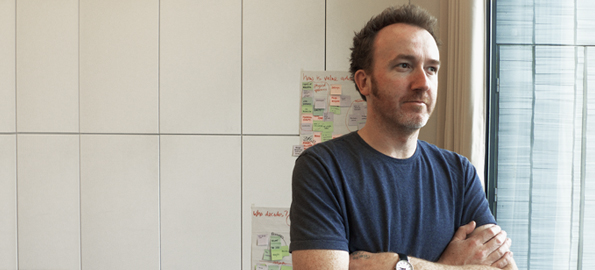Anthony Quinn, BA Ceramics Design’s new Course Leader, told us how he got into working with ceramics, the importance of raising the profile of ceramics within education and his plans for the future of the course.
How did you come to work in ceramic design?
My interest and curiosity in making led, almost by accident, to working with clay. I have always been interested in how things work, ideas around materiality and transformation as a design process. A foundation tutor diagnosed this interest and encouraged me to apply. Ceramics is a beguiling and belligerent material, this makes the transformation of something dug from the ground into something functional, beautiful, expressive or challenging, all the more impressive.
You’ve worked on projects to raise the profile of ceramics in education. Please tell us why is this important, and something about this aspect of your work.
I am a committed educator; I believe that an art education and more specifically, one based on designing through making, enables pupils to navigate their education via a different route. There is lots of evidence that working with your hands and a more attuned haptic awareness aids the development of children. I cannot fathom this STEM agenda as promoted by the government; consequently in 2010, I undertook the role of Project Coordinator for the Crafts Councils Firing Up Programme to re-introduce ceramics into the school curriculum. During this we taught 3800 pupils and 150 teachers the key skills of ceramics. From 2010-13, we were the only coherent programme nationally of ceramic tuition in the classroom. I have also used clay as an engagement tool in a Norwegian prison where we used its expressive qualities to encourage students and inmates into a state of co-design and collaboration.
What are the kind of projects your students will be working on?
BA Ceramic Design is built upon the idea of research through design collaboration, which means we try to explore material opportunities through a range of design contexts. The students are engaged in a broad range of projects, from sponsored student projects with international clients, to public engagement projects within specific contexts, to curriculum led collaboration, to competitions across a range of materials.
Where do you see the future of ceramic design heading?
The future for the subject is diverse on the one hand – we will see greater collaboration and engagement with audience and context, leveraging the hands-on nature of the material – on another, we will see a greater synergy between traditional hand skills and new technologies moving towards what we describe as future craft.
What part of your new role are you most looking forward to?
I have worked on the course for a long time as stage two tutor; I am looking forward to developing, in collaboration with students, staff and technical team, a vibrant community based on our relationships to a material and the act of making.
More:


